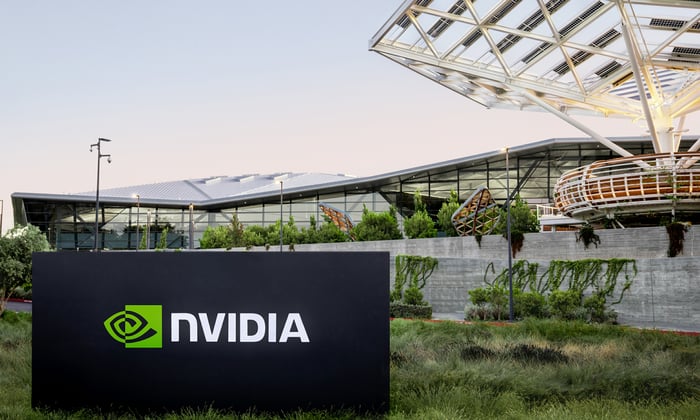Perhaps no company epitomizes 2023's artificial intelligence (AI) boom more than Nvidia (NVDA -0.92%). Shares of the tech giant soared a whopping 230% as investors piled in based on optimism that rising demand for its advanced chips would boost revenue and earnings. Let's discuss three reasons why the meteoric rise looks far from over.
1. Nvidia's operating results are incredible
Founded in 1993, Nvidia is known for pioneering the graphics processing unit (GPU), a computer chip originally designed to render complex visuals and animations mainly for the video game industry. GPUs work through parallel processing, which involves computing multiple tasks simultaneously. This turned out to have massive applications in non-graphics-related tasks like generative AI because it helps train large language models (LLMs) on vast amounts of data.
Nvidia's early focus on video game hardware gave it a massive head start in what is shaping up to be a much greater long-term opportunity. And the company's results demonstrate this epic transformation.
Nvidia's third-quarter revenue jumped 206% year over year to $18.12 billion based on sales of its new AI-capable GPUs for enterprise clients (data centers). The data center segment now represents 80% of company sales, eclipsing the previously core gaming segment, which is now under 16% of its top line. AI chips are expensive, with Nvidia's flagship H100 retailing for $30,000. And this can mean better margins and more profits -- especially since demand currently outstrips supply.
Nvidia's third-quarter net income soared by over 1,000% to $9.24 billion, and the company boasts a net income margin of 51%, which is pretty impressive for a company that manufactures and sells physical products.
2. The AI market is big enough for competition
Rapid growth and abnormal profits attract competition like moths to a flame, and Nvidia's GPU business is no exception. The biggest threat may come from its oldest rival, Advanced Micro Devices, which is currently scaling up production of its M1300x family of chips, designed to rival Nvidia's H100 in AI model training and inference, which involves running the applications in real time after they have been trained.

Image source: Getty Images.
But while Nvidia will no longer be the only game in town, that doesn't mean it has lost its economic moat. While AMD's chips are said to match Nvidia's performance, they are far behind in hitting the market, with sales expected to scale up in 2024. By the time the M1300x becomes widely available, Nvidia has plenty of time to release even more advanced chips, maintaining the bleeding edge and the pricing power that comes with it.
With the AI chip market expected to reach $400 billion by 2027, there is plenty of room for both companies to share the massive opportunity.
3. Nvidia's valuation is still reasonable
After its meteoric rise in 2023, Nvidia's share price looks quite expensive on the surface. Its price-to-sales (P/S) multiple of 26 is 10 times higher than the S&P 500 average of 2.6. But that metric doesn't account for Nvidia's rapid growth rate or spectacular margins.
With a forward price-to-earnings (P/E) multiple of 24, Nvidia's stock is still relatively cheap compared to projected future profits. And that means investors still aren't too late to bet on its long-term AI potential.





